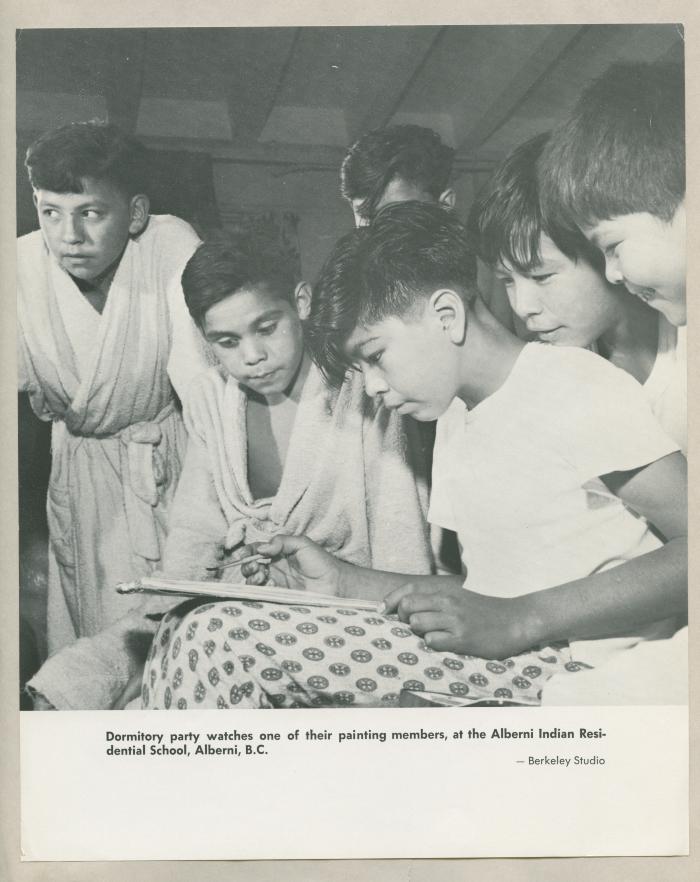Photographs have multiple meanings and can serve various purposes. Residential school photographs were sometimes taken by teachers, staff, and clergy, and occasionally by students and their families. More frequently, however, government or church personnel took the photographs, with a view of gaining support for the schools. The photographs were staged to depict the assimilation of Indigenous children into settler colonial society, their conversion to Christianity, and the “effectiveness” of the government’s “citizenship” project to “take the Indian out of the child”. These photographs are of students but not by them or for them.
Nevertheless, for Survivors and their families, some of the official photographs are still valued as they represent hard-won achievements in adverse circumstances. Official photographs may be the only photographs available to Survivors of their childhood and their friends, and for families they represent a means to search for, or connect with, family members.
To learn more about Survivors’ perspectives on the schools, see the Legacy of Hope’s “
Our Stories, Our Strength” video collection and the
hearings from the Truth and Reconciliation Commission.
If you are a former student and would like to comment on a photograph either in writing or as an audio/video recording, please
contact us.


